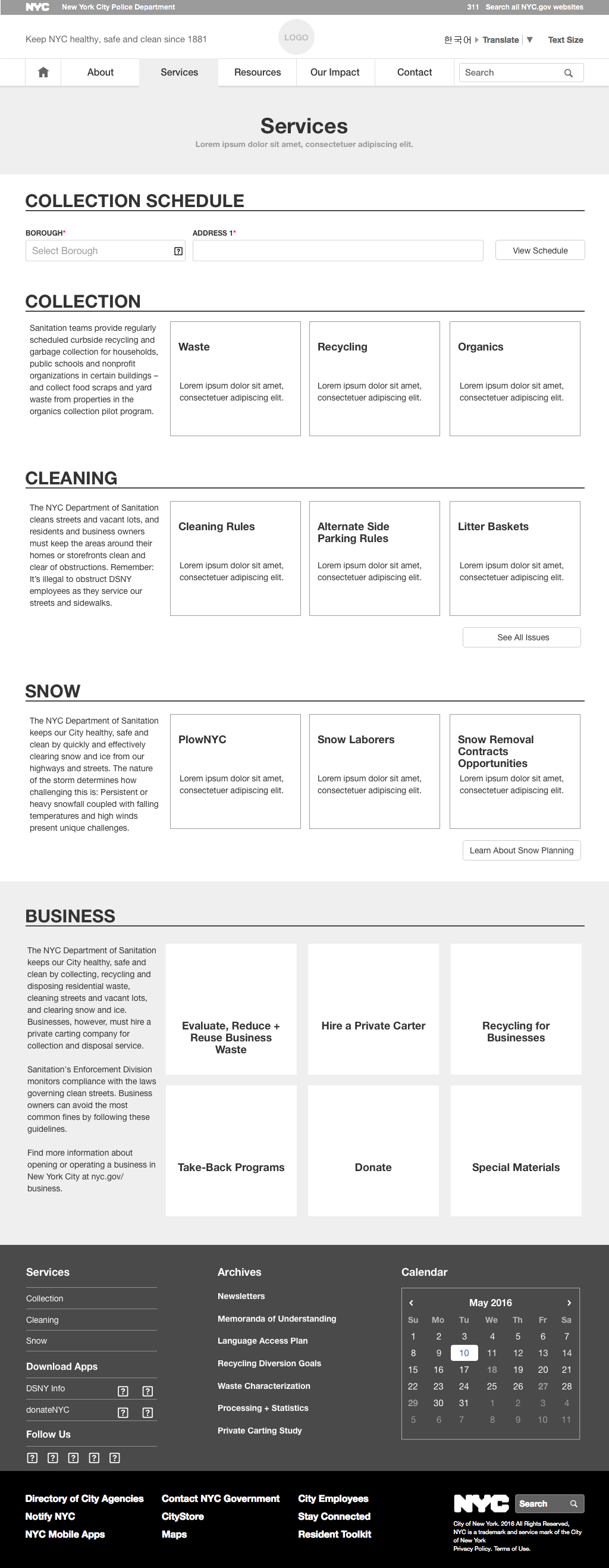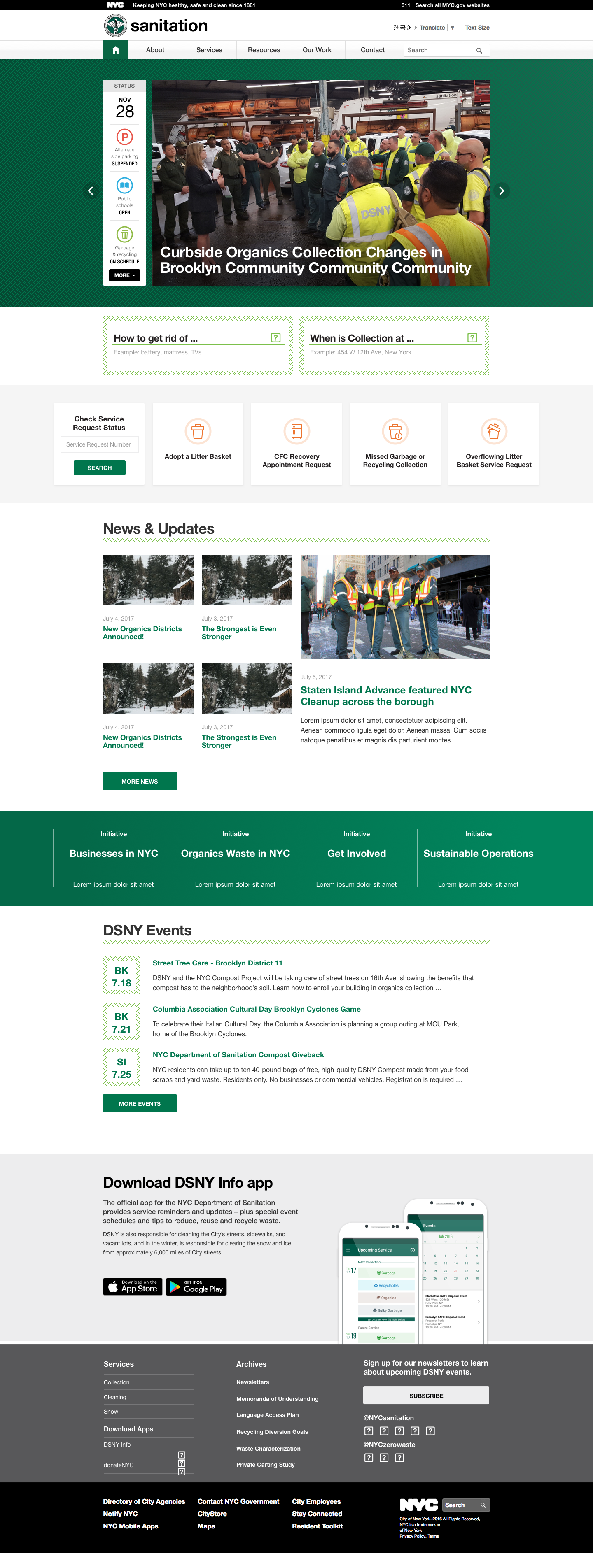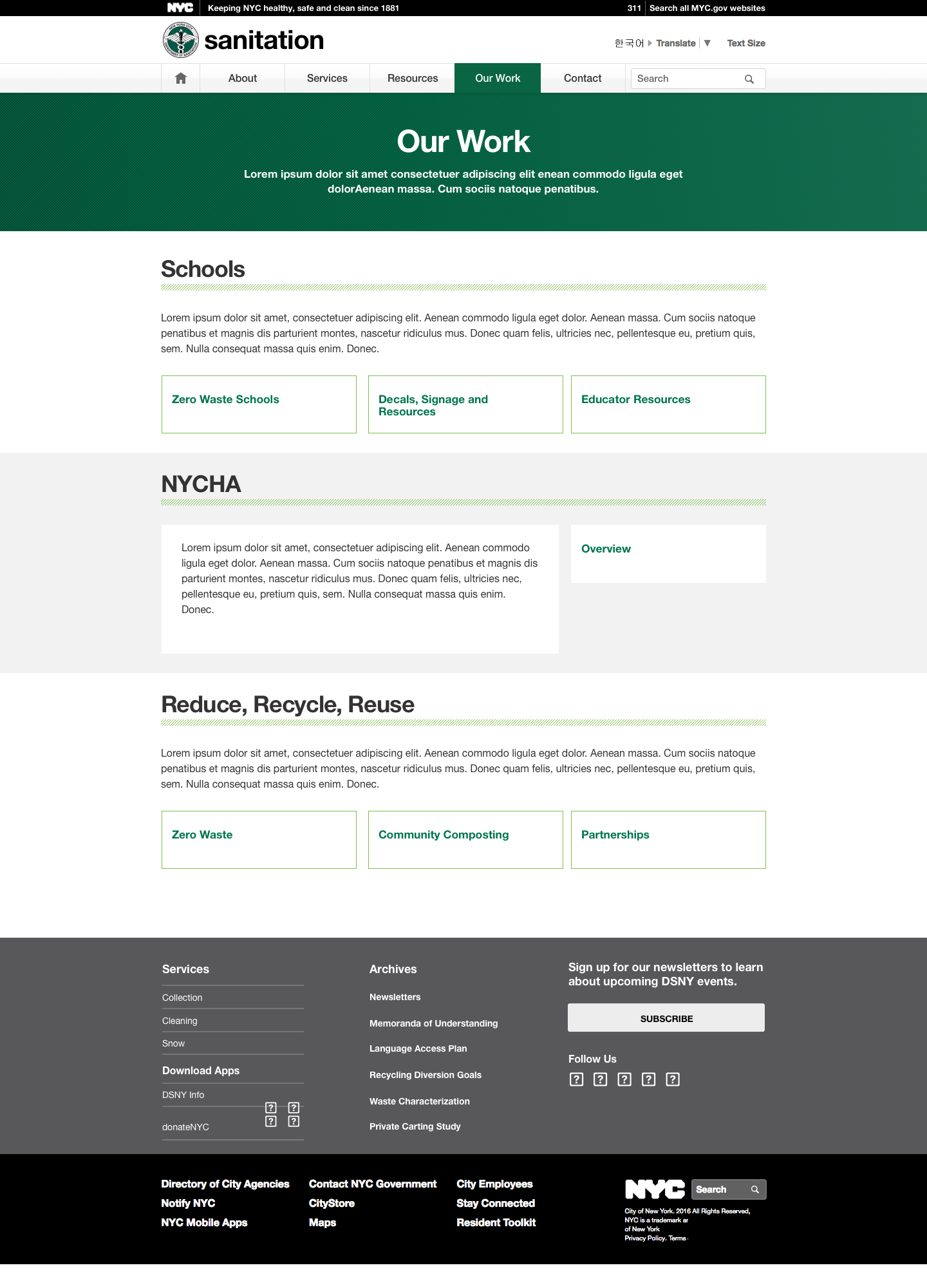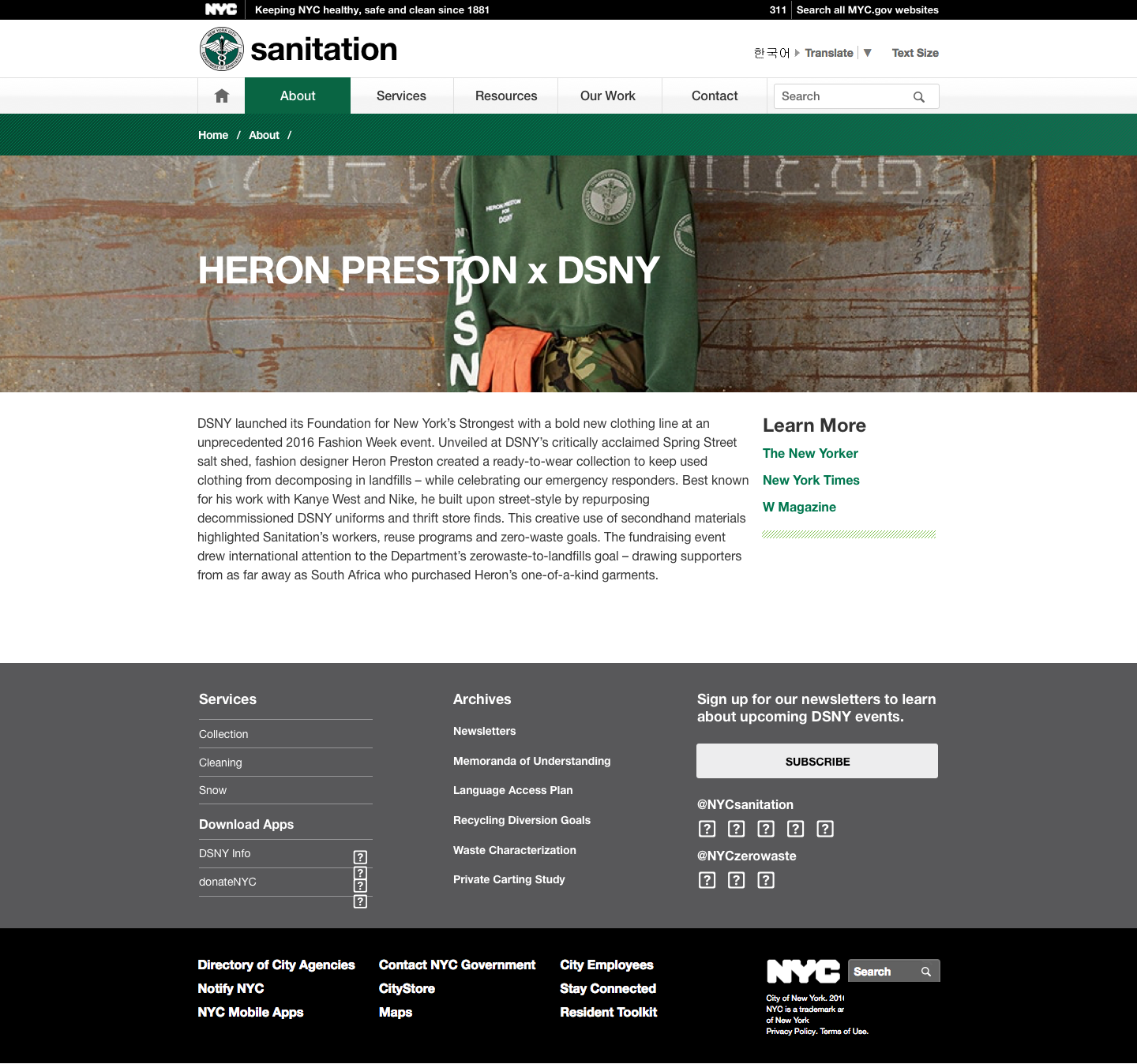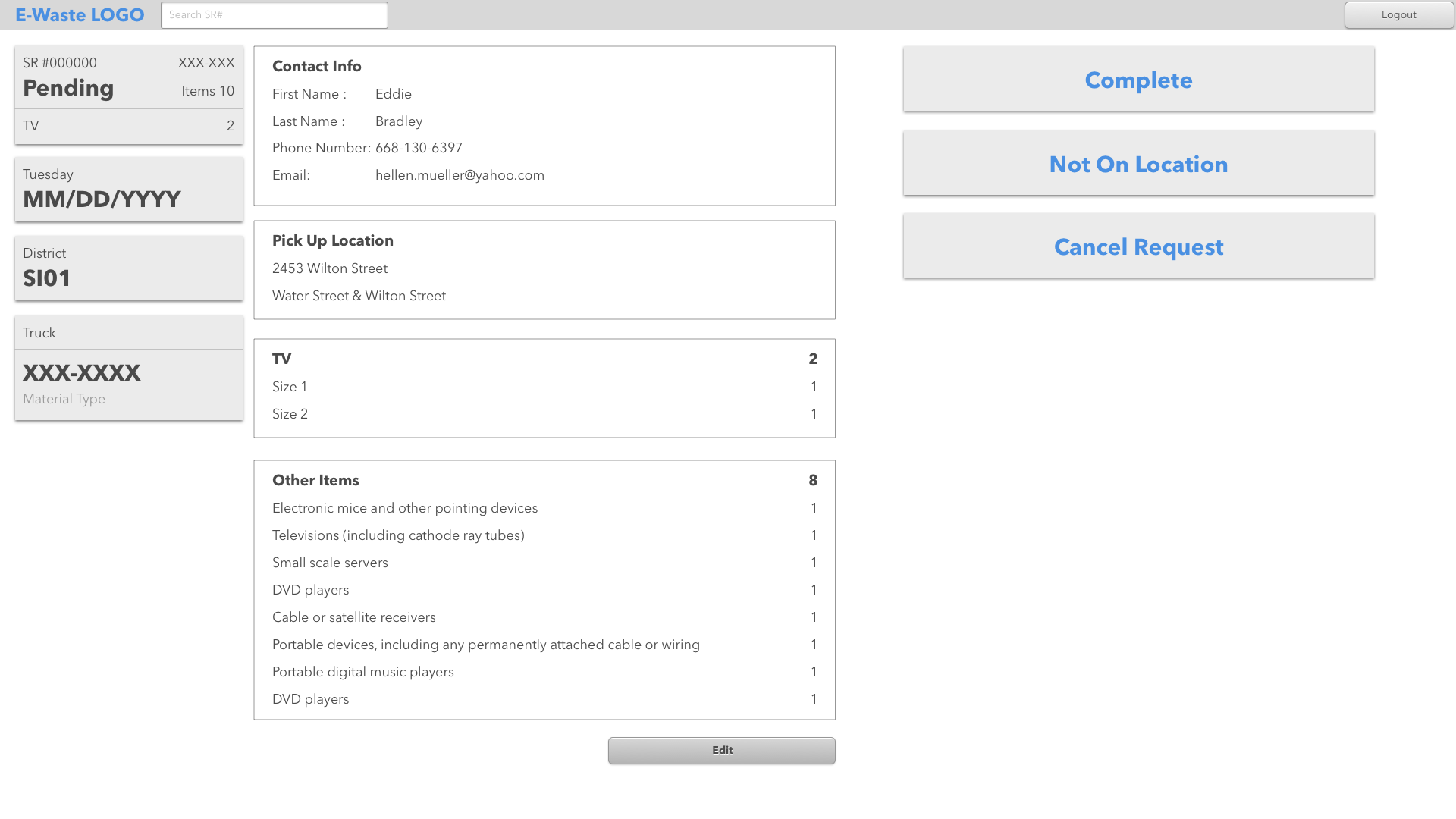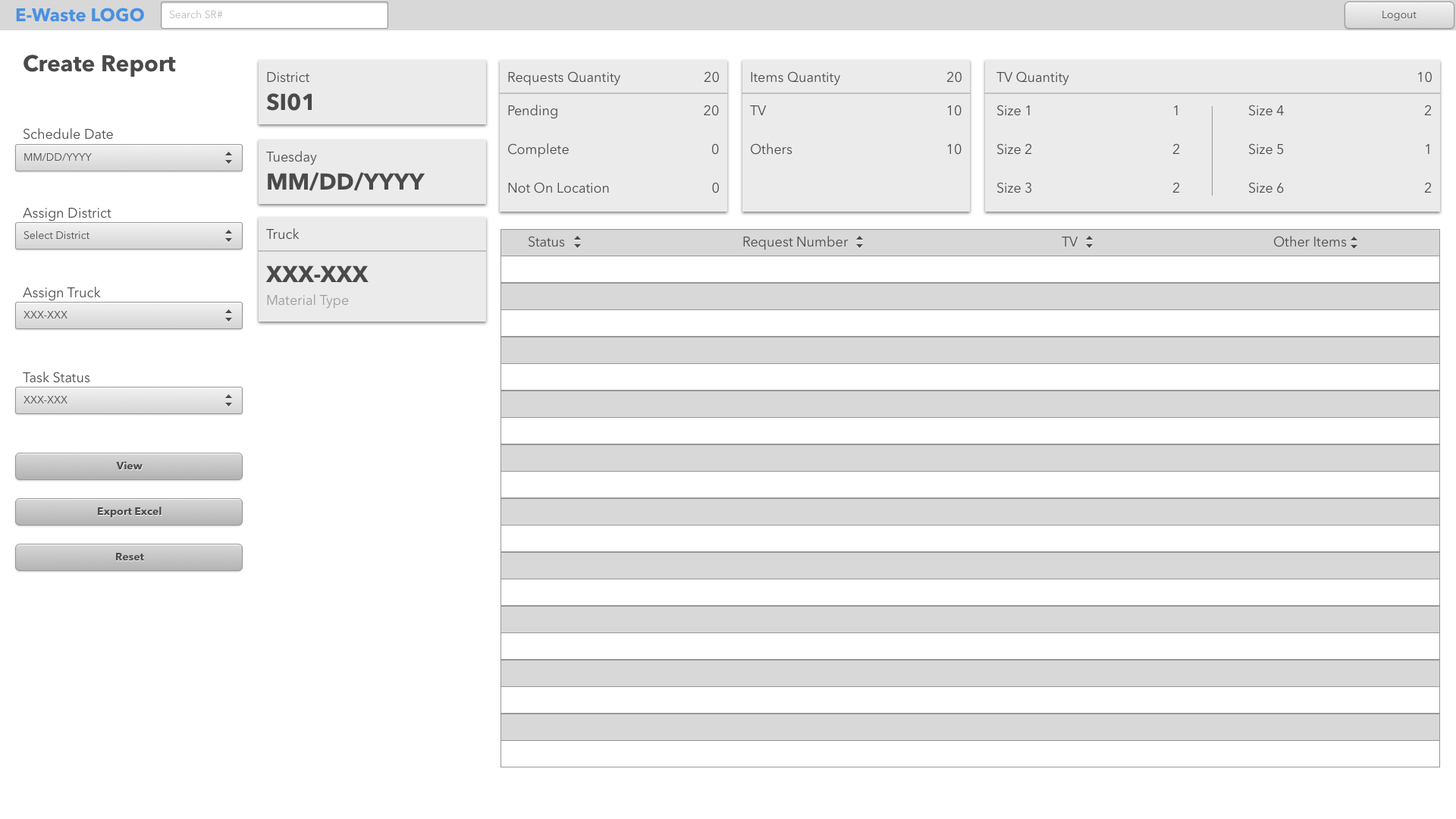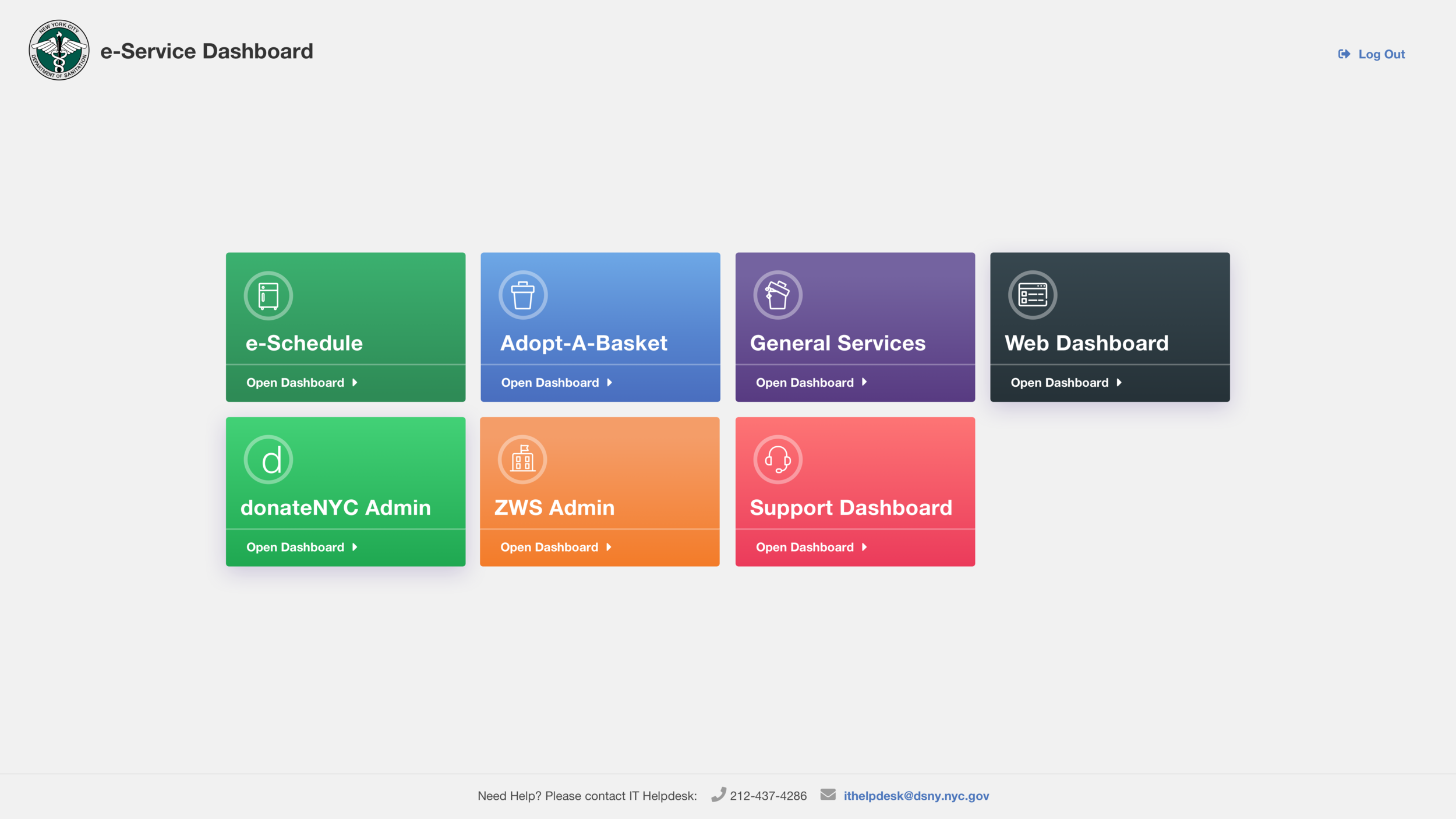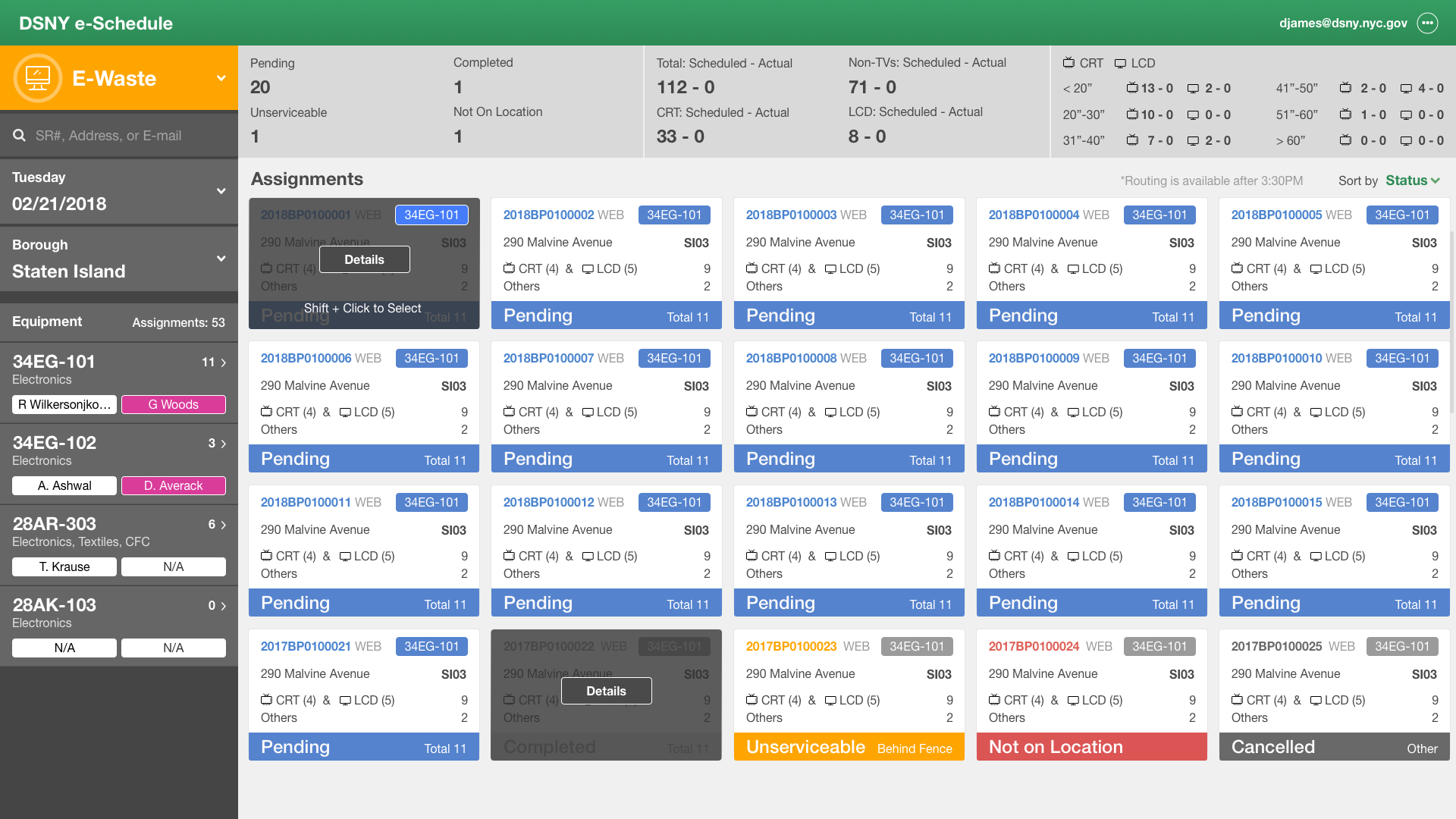PROGRAM OVERVIEW
Our primary strategy centers on User Experience (UX)—a continuous cycle of hypothesizing, designing, testing, and refining each key element to ensure an optimal and consistent experience. This approach has been crucial in gaining the support of both stakeholders and residents. Every iteration of DSNY’s products reflects an ongoing evolution in UX and a commitment to modernizing the agency’s infrastructure.
About the Product
The current Department of Sanitation (DSNY) website represents the third iteration in its development cycle. It serves as a vital communication platform, helping residents stay informed about the department’s role in maintaining a clean and livable New York City.
Customer Relationship Management
Customer Relationship Management (CRM) is an integral component of the DSNY website. Effectively managing the interactions between residents and the sanitation services they rely on is essential to ensuring a positive customer experience.
Sustainability
Sustainability isn’t limited to waste management and climate change—it also guided our approach to product development and delivery. Our goal was to build a dynamic platform where content can be created, edited, and published independently, without requiring developer or IT support. This ensures a self-sustaining system that empowers teams to manage content efficiently and adapt quickly.
My Cross-Functional Roles
Throughout the development of the program, I took on multiple roles across its various milestone phases.
As a Program Manager/Project Manager
I successfully facilitated the delivery of the program, ensuring it was completed on time and met quality standards. Throughout the process, I proactively removed impediments to maintain steady progress and devised a clear, strategic roadmap to guide the program’s direction. I owned and managed the communication plan, keeping stakeholders informed and maintaining transparency around key decisions. Additionally, I built detailed program budgets and timelines by coordinating both internal and external resources. Amid shifting priorities, I provided clear direction and input to refine the program’s definition and maintain alignment across all teams.
As An Agile Partner
I facilitated key Agile ceremonies, including sprint planning, daily stand-ups, reviews/demos, retrospectives, release planning meetings, and backlog refinement sessions. Throughout the development process, I championed Agile principles and frameworks, ensuring they were consistently applied and understood. I promoted a safe and open environment where team members felt comfortable sharing ideas, asking questions, and voicing concerns constructively. By encouraging self-reflection and continuous improvement, I helped the team identify areas for growth and enhance their performance. Additionally, I coached employees and stakeholders on Kanban fundamentals and implemented agile metrics—such as burndown and burnup charts—to effectively measure progress and success.
As a Product Owner
I presented concepts, documentation, and key program information to stakeholders, ensuring alignment and transparency throughout the project. Serving as an internal quality control checkpoint, I oversaw all phases of the development process to maintain high standards. I provided both user experience and technical development oversight, bridging the gap between design and implementation. Throughout the program, I proactively identified, communicated, and mitigated risks, assumptions, issues, and critical decisions. I also defined detailed functional specifications for feature sets and reviewed them during development to ensure thorough testing and validation at each stage.
As a Design Strategist / UX Lead
I collaborated with cross-functional leaders to identify and prioritize research activities essential to the program. Leading user testing and interviews, I validated design concepts directly with end users to ensure alignment with their needs. I guided the design process from framing the problem and synthesizing insights to ideating creative solutions, often using design sprints to accelerate progress. Throughout all stages—from discovery to validation—I employed a variety of methods to deeply understand customer needs and uncover new opportunities for innovation.
Product Roadmap
The product roadmap is grounded in evolving technologies, with ongoing coaching and guidance to help the team adapt to current industry trends.
DSNY Web 1.0
(Responsive Design)
JQuery
DSNY Web 2.0 - “Zero by 30” Update
Angular 1.0
Limited Restful service layers
Google Maps API
Mail Chimp
Unified Dashboard 1.0
Angular 1.0
Limited Restful service layers
Google Maps API
E-waste Dashboard 1.0
Angular 1.0
Limited Restful service layers
Google Maps API
Mobile Apps
Native iOS App
Native Android App
E-waste Dashboard 2.0
Angular 1.0
ESRI Vehicle Routing
Bulk Dashboard
Angular 1.0
ESRI Vehicle Routing
Unified Dashboard 2.0
(Single Page Application)
react.js
RESTful service layers
DSNY Web 3.0
(Progressive Web App)
(Single Page Application)
react.js
CMS - API Word Press
RESTful service layers
DSNY Product Roadmap
DESIGN STRATEGY
One of the greatest challenges of this program was gathering information from the Department of Sanitation (DSNY), which comprises over 20 bureaus and more than 15,000 employees. With a history spanning over 120 years, the department carries legacy processes and a wealth of undocumented knowledge that had to be carefully uncovered and understood.
User Experience Sprints
Following traditional UX phases—Objective → Research → Mock-Ups → Test → Build → Validate—the team incorporated design sprints to rapidly develop prototypes for stakeholder review and technical feedback. This approach enabled faster development and deployment cycles.
Below are mock-ups created during the design sprint, presented for review with stakeholders and business owners. Gathering feedback throughout this process was essential to the product’s success.
Design Sprint Cycle
User Interface Design
More than 300 high-fidelity user interfaces were created, covering responsive designs for desktop, tablet, and mobile apps, along with detailed design specifications.
Web Wireframes
Web User Interface
Mobile Responsive (Tablet Viewport) User Interface
Mobile Responsive (Phone Viewport) User Interface
User Experience Research
User Flow Diagram
Below is the decision tree that guides users through the appointment scheduling process.
Wireframes
User Flow Diagram
Below is the decision tree users follow when planning a route.
Wireframes
User Interface
ENTERPRISE ARCHITECTURE
The DSNY platform is the first sustainable Single Page Application (SPA) built on a content management system (CMS).
Application DMZ
Scrum Practices
The cross-functional team embraced Agile principles by applying them within a Scrum framework, working in timeboxed intervals called sprints. Open communication, close collaboration with stakeholders and business partners, rapid response to change, and the timely delivery of functional software were key drivers behind the program’s successful execution.
Technical Architecture
The DSNY platform employs a client-side three-tier architecture, where the logic, data access, storage, and user interface are developed and maintained as separate modules. Additionally, the client and service layers interact with external gateways and interfaces.
External Interactions
Technical Stack
CONCLUSION
OBSERVATIONS
The DSNY platform serves as the Department of Sanitation’s most visible communication vehicle. Throughout the sprint development phases, the cross-functional team employed design sprint methodology to accelerate progress. Meanwhile, the development team eagerly adopted new technology frameworks such as React.js.
Handling over half a million service requests annually across all platform services, managing logistics and follow-up without the CRM system would have been overwhelming.
The key takeaway is the platform’s sustainability: content creators, business users, and program providers can create, edit, and rearrange content independently—without relying on the development team.
RESULTS
In total, 11 distinct user experiences are delivered across four products, including web, iOS, Android, and standalone kiosks.
DSNY WEB 3.0
Dynamic Single Page Application, that delivers on-demand client-side consumption of services. For general public use.
Desktop / Tablet / Mobile Views
Card-based DASHBOARD
Dynamic Single Page Application, that delivers on-demand client-side consumption of services. For internal managing of content, transactions, and users.
Desktop / Tablet Views
DSNY WEB MOBILE APPLICATIONS
Native iOS and Android Application, that delivers on-demand client-side consumption of services. For general public use.
iOS / Android









